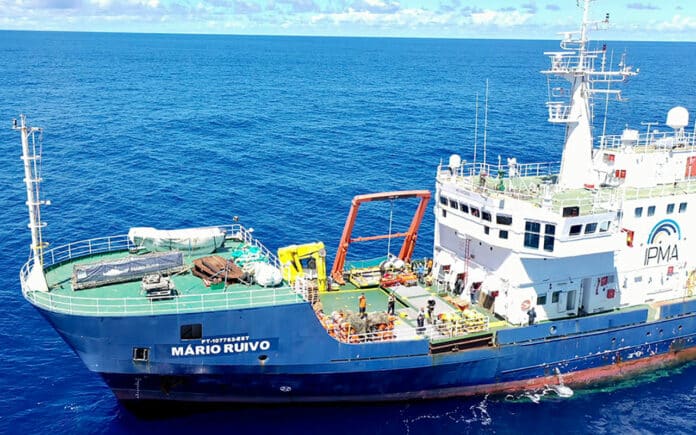The massive volcanic eruption at Tonga Volcano in the Pacific Ocean two years ago was felt 18,000 km away, on the other side of the world, at the bottom of the Atlantic Ocean. In January 2022, the cataclysmic eruption of Hunga-Tonga Hunga-Ha’apai sent pressure waves through the Earth’s atmosphere that connected with the sea surface and were detected by the seismometers on the seafloor.
These waves triggered 50 highly sensitive seismometers placed 5 km underwater on the seabed as part of an international collaboration led by UCL (University College London) researcher Professor Ana Ferreira.
It was one of several interesting phenomena detected by a network of instruments in the area where the Canary Islands and the volcanic islands Madeira and the Azores are located. The research group had placed the instruments on the seabed primarily to detect earthquakes.
The project’s aim, UPFLOW (UPward mantle FLOW from novel seismic observations), is to understand better massive upwellings of material pushing up from Earth’s mantle, which is poorly understood and ultimately causes volcanic eruptions and can lead to earthquakes.
Detecting a volcanic eruption that has occurred far away through atmosphere-ocean interactions was unexpected. The volcano signal is very interesting because it neatly illustrates the power and reach of the remarkable Pacific event.
Apart from picking up shockwaves from the volcanic eruption, the seismometers also record signals linked to the sinking of the Felicity Ace ship near the Azores, carrying 4,000 luxury cars on 1 March 2022. The signals suggest that there may have been separate explosions as the ship sank.
They were collected over five weeks during an expedition on the research vessel Mário Ruivo. The research team retrieved the seismometers by sending a series of sounds, or an acoustic code, to the instrument, which the instrument answered with its own unique acoustic signal. Another sound code from the ship instructed the instrument to release itself from its anchor so that it floated to the surface.
The researchers will now combine this new unique data with existing global seismic data to produce sharper images of the Earth’s deep interior than previously possible, improving our understanding of how deep hot rocks rise to the surface and, ultimately, how they feed volcano systems and link with earthquakes.
The seismometers will also shed light on life on the ocean floor. “Such deep sea regions are essentially unknown – we know more about the surface of the moon – and so by recovering instruments that stayed at such depths for over a year, we are bringing to surface invaluable new deep sea probes potentially full of little known bacteria,” said Professor Miguel Miranda, IPMA’s president and project partner.
